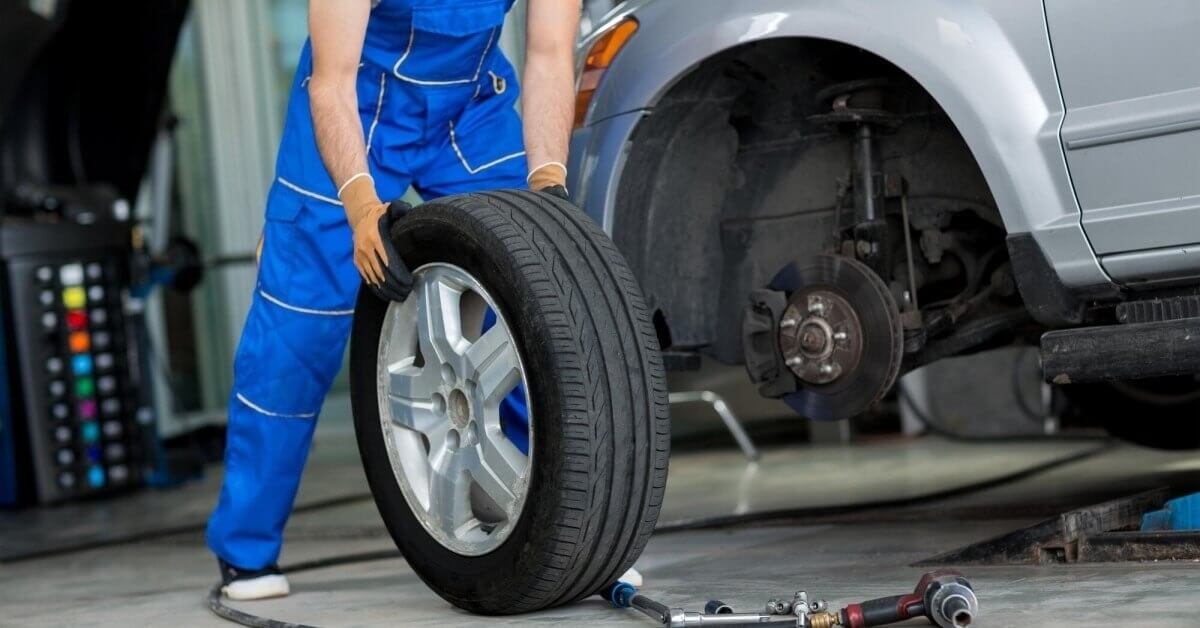Common Tyre Problems and Expert Solutions for Complete Safety
A Comprehensive Guide To Identifying Tyre Issues and their Practical Solutions

When we think about vehicle safety, we often focus on seat belts, airbags, or braking systems, but tyres are the unsung heroes of road safety. These four patches of rubber are the only point of contact between your vehicle and the road, and yet, they’re often neglected until something goes wrong. From uneven tread wear to bulging sidewalls, understanding tyre problems and how to address them isn’t just essential—it’s life-saving.
In this comprehensive guide, we’ll unravel the common tyre issues, their causes, and practical solutions. Along the way, we’ll share expert tips and DIY advice to empower you to take charge of your tyres like a pro.
1. Uneven Tread Wear: What It Means and How to Fix It
The Problem:
Uneven tread wear is one of the most common and easily detectable tyre issues. It occurs when certain sections of the tyre's tread wear out faster than others, compromising grip, stability, and even fuel efficiency.
Causes:
• Improper Wheel Alignment: Misaligned wheels cause uneven pressure distribution across the tyres.
• Incorrect Tyre Pressure: Overinflated tyres lead to excessive wear in the centre, while underinflation causes wear on the shoulders.
• Worn Suspension Components: A faulty suspension system can cause inconsistent contact between tyres and the road.
Solutions:
• Regularly check and maintain tyre pressure according to the vehicle manufacturer’s recommendations.
• Get your wheel alignment checked every 10,000 km or if you notice the vehicle pulling to one side.
• Inspect suspension components during routine servicing and replace worn parts promptly.
DIY Tip:
Use a tread depth gauge to measure the tyre tread at multiple points. If the readings vary significantly across the tyre, it’s time to investigate further.
2. Bulging or Cracked Sidewalls: A Warning Sign You Can’t Ignore
The Problem:
Bulges or cracks in the sidewall indicate structural damage to the tyre, often caused by an impact or aging. These issues can lead to a sudden blowout, especially at high speeds.
Causes:
• Impact Damage: Hitting a pothole, curb, or debris can weaken the tyre's internal structure, leading to bulges.
• Age and Weathering: Over time, exposure to sunlight, heat, and chemicals causes the rubber to crack and degrade.
• Low Tyre Pressure: Driving on underinflated tyres increases flexing, which weakens the sidewalls.
Solutions:
• Replace tyres with bulging sidewalls immediately, as they cannot be repaired.
• Store your vehicle in a shaded area or use tyre covers to protect against UV damage.
• Monitor and maintain the recommended tyre pressure to prevent unnecessary stress on the sidewalls.
DIY Tip:
Run your hand along the tyre sidewalls during your routine inspection. Any unusual bulges or cracks should prompt an immediate visit to the service centre.
3. Punctures and Slow Leaks: More Than a Flat Tyre
The Problem:
Punctures are a common occurrence, but slow leaks can go unnoticed for weeks, gradually lowering tyre pressure and compromising performance.
Causes:
• Sharp Objects: Nails, glass, or debris on the road can puncture the tyre.
• Valve Stem Damage: A worn or damaged valve stem can cause air to escape slowly.
• Bead Damage: Improper tyre mounting or impact can damage the tyre bead, leading to leaks.
Solutions:
• Repair punctures using a patch or plug, but only if the damage is within the tread area and not too large.
• Replace the valve stem whenever you install new tyres.
• If the bead is damaged, consult a professional for inspection and repair.
DIY Tip:
If you suspect a slow leak, apply soapy water to the tyre surface and watch for bubbles. This simple trick can help you pinpoint the source of the leak.
4. Tyre Noise: An Overlooked Indicator of Trouble
The Problem:
Excessive tyre noise isn’t just annoying—it often signals an underlying issue such as uneven wear, alignment problems, or even a manufacturing defect.
Causes:
• Feathering: Uneven tread blocks create a “whirring” sound as the tyre rotates.
• Cupping or Scalloping: This occurs when parts of the tread wear more than others, leading to a thumping noise.
• Improper Tyre Choice: Using tyres unsuited for your vehicle or driving conditions can amplify noise.
Solutions:
• Rotate your tyres every 8,000-10,000 km to promote even wear.
• Use tyres designed for your specific vehicle and road conditions.
• Address alignment or suspension issues promptly to prevent abnormal wear patterns.
DIY Tip:
Drive at different speeds and on various surfaces to identify tyre noise patterns. This can help you diagnose whether the problem is tyre-related or due to other vehicle components.
5. Tyre Pressure Monitoring Systems (TPMS): Friend or Foe?
While TPMS technology has revolutionised tyre maintenance, over-reliance on these systems can lead to complacency. A faulty TPMS sensor or delayed alerts may result in unnoticed underinflation.
Pro Tip:
Manually check tyre pressure at least once a month, even if your vehicle is equipped with TPMS. Old-school vigilance never goes out of style!
6. The Importance of Tyre Rotation and Balancing
Why It Matters:
Tyres don’t wear evenly due to differences in weight distribution and driving patterns. Regular rotation ensures even wear, extending tyre life and maintaining consistent performance.
DIY Tip:
Follow the "cross-rotation" pattern for non-directional tyres:
• Front tyres move to the rear on the same side.
• Rear tyres move to the front on the opposite side.
Trusted service providers like TyrePlus offer comprehensive tyre inspections, alignments, and replacements. With certified technicians and state-of-the-art equipment, TyrePlus ensures your tyres meet the highest safety standards.
7. The Role of Driving Habits in Tyre Longevity
How you drive has a significant impact on your tyres. Aggressive acceleration, sudden braking, and sharp cornering put unnecessary stress on your tyres, causing premature wear and damage.
Pro Tip:
Adopt smoother driving habits and avoid overloading your vehicle to reduce tyre stress and improve fuel efficiency.
8. Seasonal Tyres: Are You Using the Right Ones?
In regions with distinct weather conditions, using the wrong type of tyre can compromise safety and performance.
Summer Tyres:
Optimised for dry and wet roads, these tyres offer superior grip in hot conditions.
All-Season Tyres:
A balanced option for moderate climates, though they may not perform as well as specialised tyres in extreme conditions.
Winter Tyres:
Designed for icy and snowy roads, with deeper treads and softer rubber for enhanced grip.
9. Signs It’s Time to Replace Your Tyres
Even the most well-maintained tyres have a lifespan. Look for these warning signs:
• Tread depth below 1.6 mm (use a coin test to check).
• Visible cracks or deformities on the tyre surface.
• Excessive vibration while driving, indicating internal damage.
We understand that tyres may not be the most glamorous part of your vehicle, but they are undeniably the most critical. By understanding common tyre problems and their solutions, you can ensure safer, more efficient journeys for years to come. Whether it’s a quick DIY inspection or investing in high-quality tyres, the steps you take today could save lives tomorrow.
